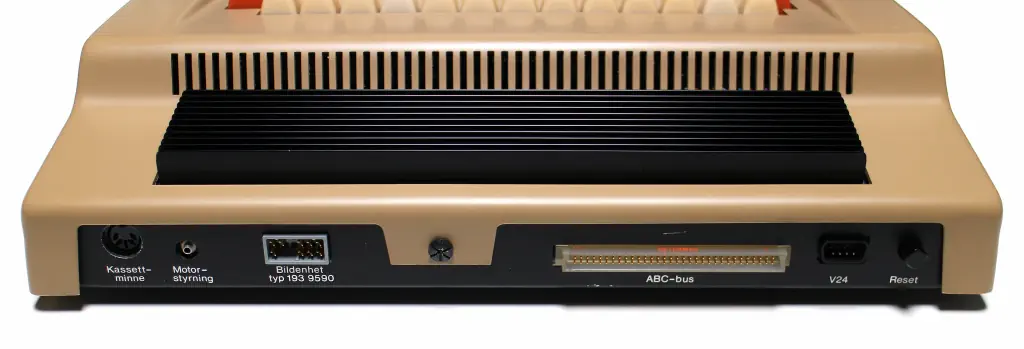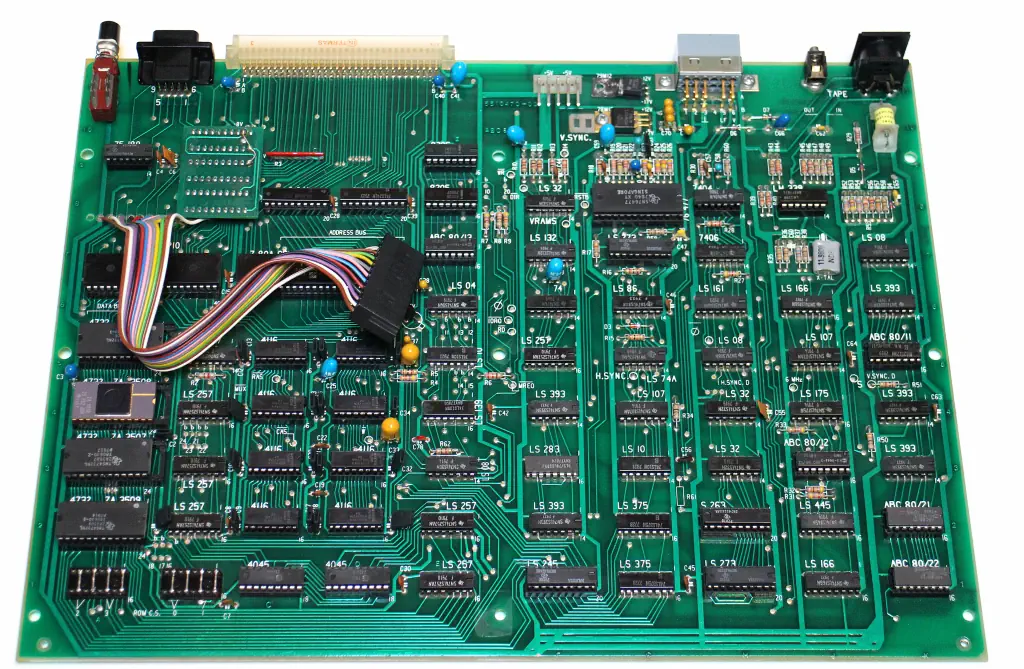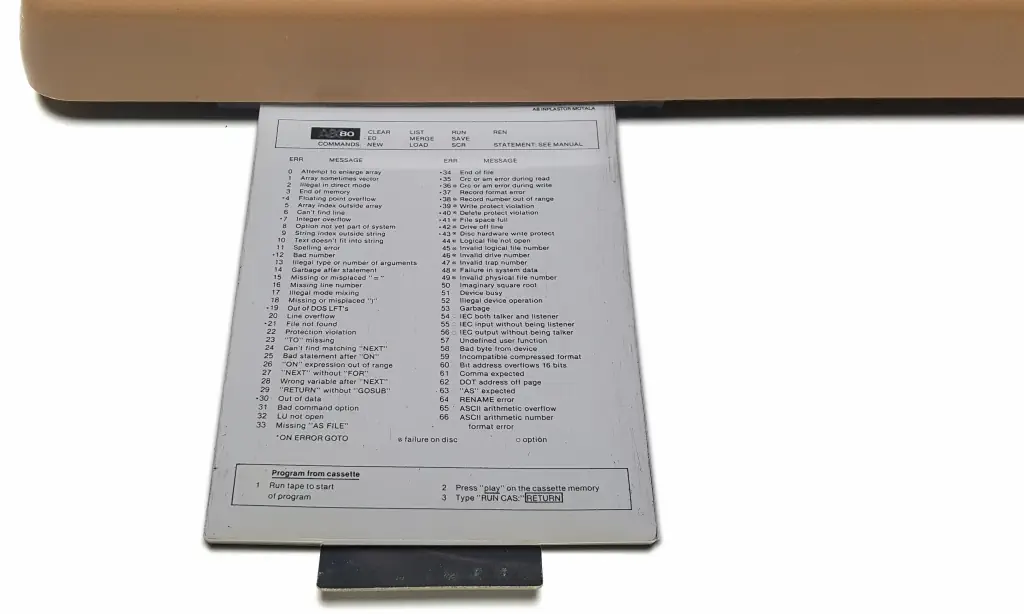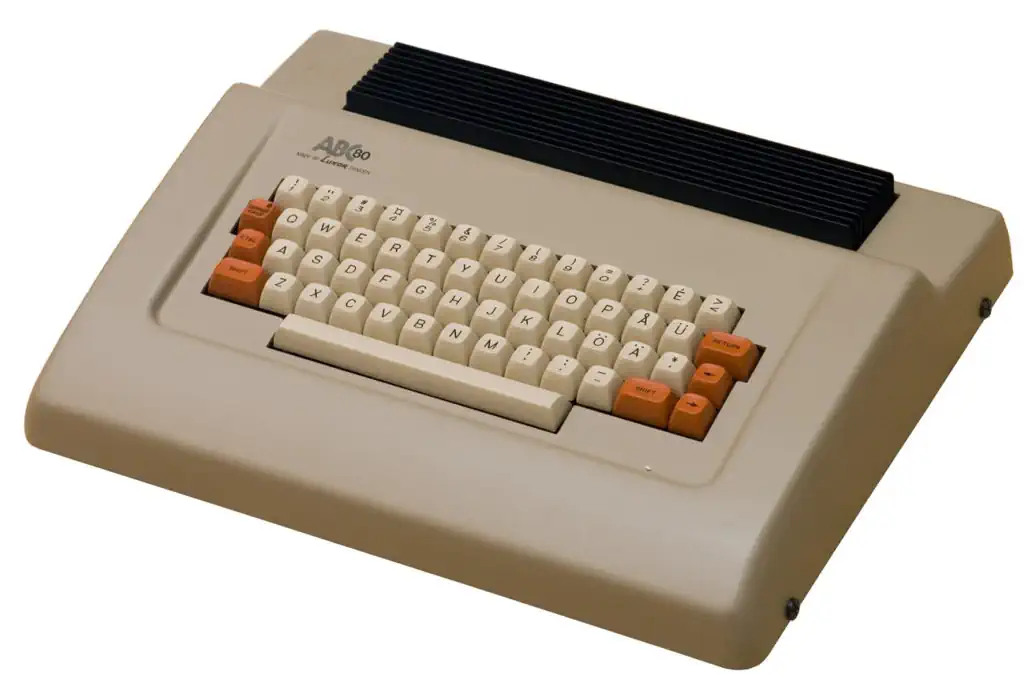Luxor ABC-80
This is the ABC-80 from the Swedish company Luxor and released in 1978. This computer is a basic Z80 based computer with a full-stroke keyboard and limited memory and display capabilities.
Notable was the use of the SN76477 sound chip, a sound generator by Texas Instruments released in 1978 and capable of generating complex audio signal waveforms by combining the outputs of various frequency oscillators and a noise source.
Unique to this computer was that there was a CW-decoder by ELFA Radio. This required a simple LM567 interface.
Ports & Interfaces
- Video out (193 9590 type port)
- Tape recorder I/O
- 4680 CPU Bus (ABC-Bus)
- V24 port
- Relay Port for monitor on/off
Luxor ABC-80 backside

Luxor ABC-80 motherboard

Reference card underneath

ABC-80 without case

Zilog Z80 CPU Family
The Z80 quickly became popular in the personal computer market, with many early personal computers, such as the TRS-80 and Sinclair ZX80, using the Z80 as their central processing unit (CPU). It was also widely used in home computers, such as the MSX range, SORD, and the Amstrad CPC, as well as in many arcade games. Additionally, it was also used in other applications such as industrial control systems, and embedded systems. The Z80 was widely used until the mid-1980s, when it was gradually replaced by newer microprocessors such as the Intel 80286 and the Motorola 68000.
The Z80 microprocessor was developed by Zilog, a company founded by Federico Faggin in 1974. The Z80 was released in July 1976, as a successor to the Intel 8080. It was designed to be fully compatible with the 8080, but also included new features such as an improved instruction set, more powerful interrupts, and a more sophisticated memory management system.
The Z80 quickly became popular in the personal computer market, with many early personal computers, such as the TRS-80 and Sinclair ZX80, using the Z80 as their central processing unit (CPU). It was also widely used in home computers, such as the MSX range, SORD, and the Amstrad CPC, as well as in many arcade games. Additionally, it was also used in other applications such as industrial control systems, and embedded systems. The Z80 was widely used until the mid-1980s, when it was gradually replaced by newer microprocessors such as the Intel 80286 and the Motorola 68000. The design was licensed to Synertek and Mostek as well as the European SGS.
The Z80s instruction set is binary compatible with the Intel 8080, so that 8080 code such as the CP/M Operating System and Intel's PL/M compiler for the 8080 can run unmodified on the Z80. The Z80 had many enhancements over the 8080 such as 16-bit data movement instructions, block copy and block I/O instructions, single bit addressing of all registers, IX/IY offset registers, better interrupt system and a complete duplicate register file for context switching during an interrupt.
Source: WikiPedia

RAM max: 32kB
ROM: 16kB Sound Chip SN76477 Sound SN76477 Sound generator Display Chip unknown Display 40x24 text Best Text 40x24 Best Color monochrome Best Graphics 240x240 System OS Luxor Basic Storage External Tape Recorder, FDD Original Price 6900 SEK

